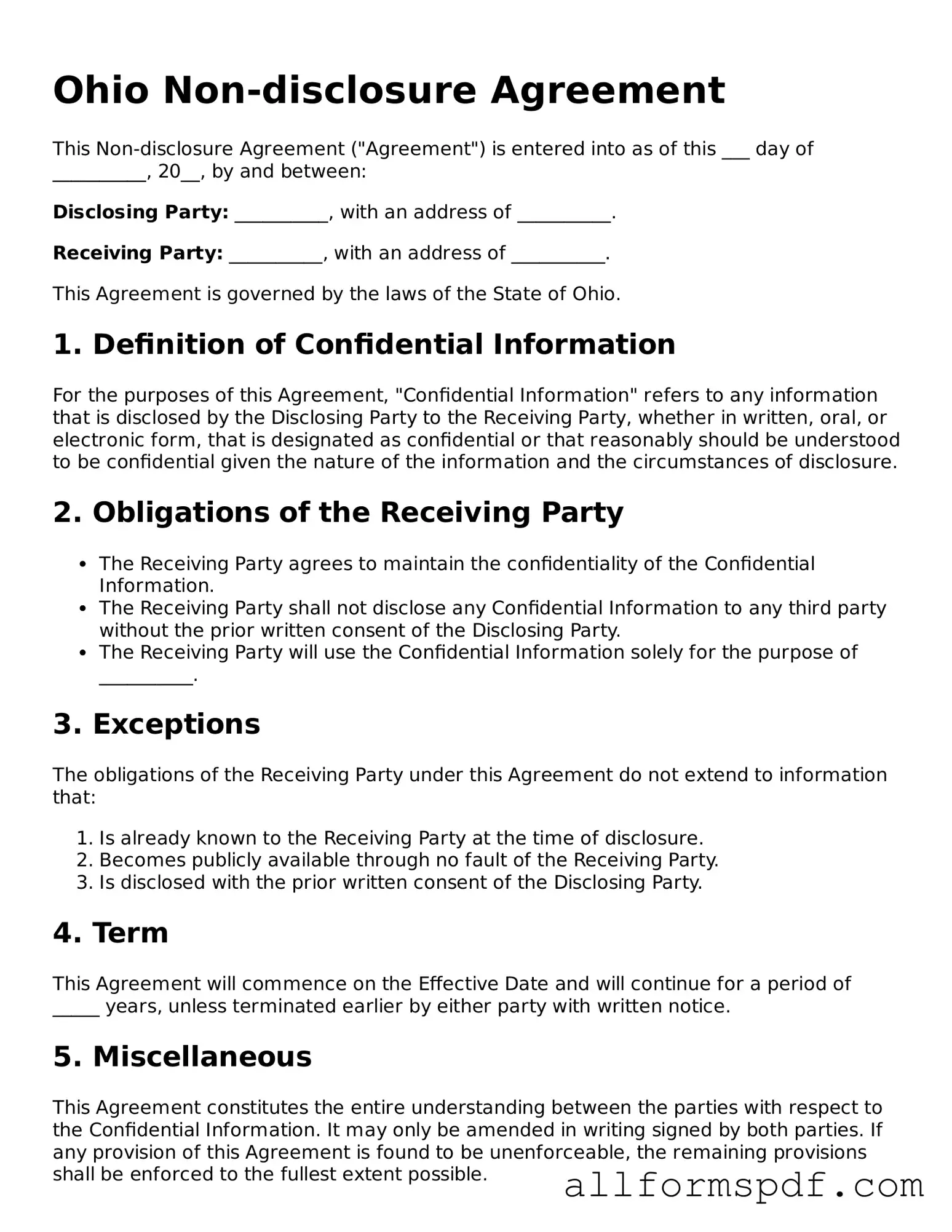Filling out the Ohio Non-disclosure Agreement (NDA) form can seem straightforward, but many individuals make common mistakes that can lead to complications. One frequent error is failing to clearly define the confidential information. Without a precise description, the agreement may not protect the intended information effectively.
Another common mistake is neglecting to specify the duration of the confidentiality obligation. Some individuals assume that confidentiality lasts indefinitely, but this is not always the case. Clearly stating how long the information should remain confidential helps avoid misunderstandings later on.
Many people overlook the importance of including the parties involved in the agreement. It’s essential to list all parties who will have access to the confidential information. Omitting a party can lead to legal issues and weaken the enforceability of the NDA.
Inadequate signatures are also a frequent problem. Each party must sign the document to indicate their agreement to the terms. Failing to obtain the necessary signatures can render the NDA unenforceable.
Some individuals mistakenly believe that a verbal agreement is sufficient. However, NDAs should always be documented in writing. Relying on verbal agreements can lead to disputes and confusion about the terms.
Another error is using overly complex language. While legal terminology may seem necessary, using clear and simple language is more effective. This ensures that all parties understand their rights and obligations under the agreement.
Not including a clause for dispute resolution can create problems down the line. If a disagreement arises, having a clear process for resolving disputes can save time and resources. It’s wise to outline how conflicts will be handled within the NDA.
Some individuals fail to consider the consequences of breaching the agreement. It’s important to specify what happens if a party discloses confidential information. This can include legal action or financial penalties, which should be clearly outlined in the document.
Another mistake is neglecting to review the NDA with legal counsel. While it may seem unnecessary, having a legal expert review the agreement can help identify potential issues and ensure that it meets all legal requirements.
Finally, many people do not keep a copy of the signed NDA for their records. Retaining a copy is crucial for future reference, especially if any disputes arise. Without documentation, proving the terms of the agreement can become challenging.
